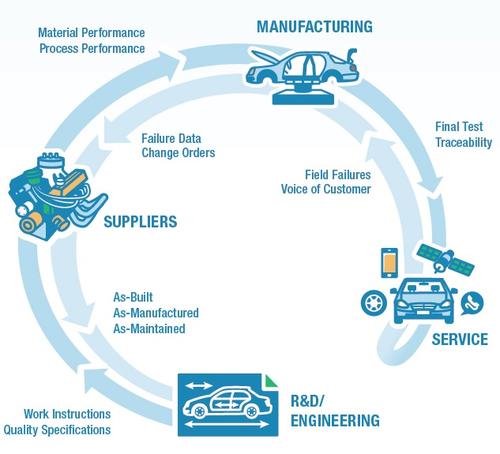Design Can Escape the Silo Through Closed-Loop Quality Systems
August 26, 2015

Enterprise quality management systems (EQMS) are helping manufacturers avoid the disconnect created by the homegrown, siloed quality systems that tend to get developed within individual departments and business units. Integrating upstream groups such as design, product development, and R&D with the overall quality regime might be one of the most crucial practices for making sure that the company delivers the product quality the customer demands.
LNS Research has been studying the relative quality-management maturity of manufacturers worldwide. The best-performing companies practice what LNS refers to as closed-loop quality, i.e., a holistic, enterprise-wide approach to quality. They use feedback loops that consistently deliver quality information to wherever it is needed and just when it is needed, across the organization, according to LNS.

Rob Harrison, quality management analyst at LNS, told Design News that closed-loop quality “is increasingly important to organizations experiencing ever-growing demands for greater velocity,” particularly in new product introductions. A closed-loop system, he said, can “effectively dissolve the traditional silos in the value chain” and can serve “as a reliable, single source of truth in near real time.”
The involvement of the engineering and R&D functions is crucial to such a closed-loop, holistic approach to quality. Since faulty design triggers the most costly kinds of product failures, such errors can be avoided if design and engineering groups are given access to downstream information like as-built, as-manufactured, and as-maintained data; testing and inspection plans; failure modes; and effects analysis.
A closed-loop EQMS can also help the design group communicate changes in a timely fashion. As an example, quality solution provider IQS reports that automotive accessories manufacturer Cequent Group implemented a document-management system that reduced processing time for engineering change notices (ECNs) from 15 days to only three days while improving ECN accuracy from 78 percent to 97 percent.
MORE FROM DESIGN NEWS: Culture Club: How Upper Stratosphere Companies Make Quality Pervasive
High-performing companies, according to LNS, view quality not merely as a department but as a responsibility. Quality is seen not just as a route to compliance, but as “a common vision of operational excellence.”
Such companies, Harrison said, recognize that whether the design and R&D groups are closely integrated into the EQMS regime makes or breaks the enterprise. “Every product- and process-related issue has potential insight and value for the upstream functions,” he said. “Seamless connection via the EQMS conduit and visibility of issues from manufacturing or from customers helps drive improved design” and helps mitigate risks around product failures.
An effective EQMS solution will automate quality processes such as NC/CAPA (non-conformance and corrective and preventive actions) across the enterprise. It will deliver documents in electronic form where and when they are needed, allowing professionals in all functional areas to take action and collaborate on quality-control measures. An EQMS also needs to integrate with other enterprise systems, such as enterprise resource planning (ERP) and manufacturing operations management (MOM).
At the level of design engineering, good integration between EQMS and product lifecycle management (PLM) can provide particular value, Harrison said: “This, with a harmonized process, facilitates a data conduit from design to the field and back for quality management.”
Pointing to the future, Harrison said the Internet of Things promises to contribute to quality management by creating a tighter loop and more reliable data for design and engineering. He told Design News that smart or connected products will allow the engineering organization to further automate quality processes and gain direct data and intelligence on product performance “without the intervention and potential bias of customers or service techs.”

Al Bredenberg is a writer, analyst, consultant, and communicator. He writes about technology, design, innovation, management, and sustainable business, and specializes in investigating and explaining complex topics. He holds a master's degree in organization and management from Antioch University New England. He has served as an editor for print and online content and currently serves as senior analyst at the Institute for Innovation in Large Organizations.
About the Author(s)
You May Also Like


.jpg?width=300&auto=webp&quality=80&disable=upscale)


